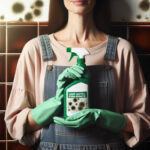Common Myths About Finger Nail Fungus – Debunked!

Getting Started: Busting Finger Nail Fungus Myths
Let’s face it – there’s a sea of misinformation out there about finger nail fungus. It’s easy to get lost in all the myths, and sometimes these misconceptions do more harm than good. In this piece, we roll up our sleeves and dive into some of the most common misunderstandings, stripping away the confusion to reveal the real facts backed by solid research. Whether you're just curious or really need reliable info to take care of your nail health, we’re here to help you untangle fact from fiction, all wrapped in a friendly, down-to-earth tone.
What’s Finger Nail Fungus, Anyway?
At its core, finger nail fungus is an infection of the nail, most often triggered by a family of fungi known as dermatophytes. These pesky microorganisms love warm, moist environments, and they can affect both your fingernails and toenails. It usually kicks off with a subtle change in color or texture of your nail before things escalate to thickening, brittleness, and even discomfort. By getting a basic handle on what this infection really is, you can start to see through the smoke and mirrors of many exaggerated myths. The great news? When caught early, finger nail fungus is typically treatable, though a lot of confusion still leads some folks to worry unnecessarily or try the wrong remedies.
Where Do These Myths Even Come From?
The origins of nail fungus myths are as tangled as an old ball of yarn. Sometimes, it’s because the symptoms can look pretty dramatic at first glance, leading folks to think it’s a major crisis. Other times, early diagnostic mistakes and outdated treatment methods left people scratching their heads, unsure about how contagious or risky the condition really is. Throw in a heavy reliance on age-old remedies and word-of-mouth stories, and it’s no wonder that nail fungus started getting a bad rap. Understanding this history can really put things in perspective and shows us why debunking these myths is so important.
The Domino Effect on Treatment Choices
Misinformation about nail fungus doesn’t just confuse— it can seriously mess with treatment strategies. Many people delay visiting a doctor or end up trying sketchy home remedies because they’ve bought into some of the scarier myths. This often makes the infection tougher to deal with over time. When myths exaggerate how severe the problem is or misrepresent its true nature, some folks either overreact or completely dismiss their symptoms, which can lead to misdiagnoses or even exacerbate the problem. Clearing up these myths isn’t just an academic exercise; it’s about giving you the tools to make smart, informed choices about your nail care and overall health.
A Blast from the Past: The History of Finger Nail Fungus Myths
The Early Days of Nail Fungus Misconceptions
Travel back in time to when medical science was still finding its feet, and you’ll see where some of these nail fungus myths took root. Back then, without today's fancy diagnostics, any odd nail change was often swept up into a mix of superstition and fear. Different nail conditions were lumped together, and any unusual appearance would set off alarm bells. This confusion bred myths – from ideas that the fungus could spread through casual touch, to beliefs tying nail problems to poor hygiene. Even now, those old misconceptions echo through our modern-day understanding, misleading even the cautious among us.
How Cultural Beliefs Fanned the Flame
Cultural narratives have a funny way of adding layers to any condition, and nail fungus is no exception. In many traditions, any visible nail abnormality was seen as a sign of deeper health issues or even a reflection of one’s character and cleanliness. Folk remedies and old wives’ tales took root and flourished, sometimes dwarfing solid, clinical advice. Passed down through generations, these stories have become ingrained in the collective mindset, making it a real uphill battle for modern medicine to set the record straight.
Clearing Up the Confusion: Debunking Nail Fungus Myths
Myth 1: It’s Super Contagious
One of the biggest misunderstandings is that finger nail fungus is highly contagious – a sort of “germ on the loose” that can be caught from everyday contact. Sure, fungal spores can travel from one person to another, but the chances of a healthy nail getting infected are pretty slim unless the conditions are just right: think warm, moist, and a little damaged nail surface. The narrative of hyper-contagiousness really blows the risks out of proportion, feeding on isolated incidents and a misunderstanding of fungal behavior, which in turn stokes unnecessary worry.
Myth 2: Nature’s Cures Always Do the Trick
When dealing with nail fungus, many people naturally turn to home remedies, believing that “natural” equals “always effective.” While natural treatments like tea tree oil or vinegar soaks might help in the early days of an infection, they aren’t magic bullets, especially for more stubborn cases. Depending solely on these remedies might delay seeking proper medical advice, sometimes just prolonging the issue. A smart approach is to blend conventional treatments with supportive natural options where appropriate.
Myth 3: It’s Just a Cosmetic Blemish
It might seem harmless to label nail fungus as merely a cosmetic nuisance, but that view can be misleading. While it’s true that the infection initially affects the appearance of your nail, dismissing it as only a beauty issue can overlook potential health implications. Persistent nail fungus could hint at broader health concerns and might escalate to discomfort or pain if not addressed properly. Taking it lightly might mean missing the window to get it treated before it turns into something more serious.
The Science Behind Finger Nail Fungus
Digging Into the Details
Thanks to modern science, we now have a clearer picture of how nail fungus works. The fungi that cause these infections are generally opportunistic invaders that move in when your nail is already weakened or damaged. Research in mycology shows how these tenacious organisms adapt to thrive in dark, moist environments. Knowing the lifecycle of these fungi helps us understand why early intervention and good nail hygiene are so key to preventing infections. It’s a reminder that sometimes, the tiniest details can make a big difference.
How New Research is Turning Old Ideas on Their Head
Recent studies have been a game changer in debunking outdated beliefs about nail fungus. Rigorous clinical trials and lab research now provide the facts – fungal infections, though persistent, are usually manageable with the right treatment at the right time. Our deeper grasp of fungal genetics and the body’s immune response has paved the way for more advanced antifungal medications and treatment strategies, proving that many long-held myths just don’t hold up to modern scrutiny.
The Real-World Impact of Nail Fungus Misinformation
When Delays and Misdiagnoses Happen
Spreading false information about nail fungus can have serious consequences. Too often, folks influenced by these myths either wait too long to see a doctor or stick to home remedies that just don’t cut it. This procrastination can make the infection tougher to beat, leading to misdiagnoses and complications like prolonged pain or even nail deformation. Getting the right help early on is crucial, which is why accurate, up-to-date information is so important in helping patients take proper care of their nails.
How Misbeliefs Shape Patient Choices
It’s amazing how much myths can steer our healthcare decisions. When people believe nail fungus is extremely contagious or think that natural fixes will always work, they’re more likely to avoid professional guidance. This can lead not only to ineffective treatments but also keeps the cycle of misinformation going. Doctors and experts continue to stress the value of relying on research-backed methods rather than outdated lore, as this approach is always the best bet for long-term health.
Expert Tips for Preventing and Caring for Your Nails
Smart Strategies for Healthy Nails
Good nail care goes way beyond keeping them pretty—it’s also a defense against infections like nail fungus. Experts suggest a few simple yet effective habits: keep your nails trimmed, clean, and dry; regularly disinfect your nail tools; and opt for breathable footwear. Don’t forget a balanced diet loaded with vitamins and minerals to boost your nail strength. Routine check-ups can catch problems early, allowing you to nip potential issues in the bud. These little steps can make a big difference in maintaining a strong, healthy set of nails.
When It’s Time to Call in the Pros
Even with the best preventive measures, sometimes professional help is needed. If you notice ongoing discoloration, thickening, or discomfort that doesn’t improve with regular care, it might be time to get a professional opinion. Early signs of nail fungus shouldn’t be brushed aside or treated indefinitely at home. A healthcare provider can give you a proper diagnosis and tailor a treatment plan just for you, which might include prescription medications or advanced testing. Getting help sooner rather than later could save you a lot of trouble down the road.
Wrapping It Up: Setting the Record Straight on Nail Fungus
The Myths We’ve Busted
In our conversation today, we’ve sifted through and debunked several common myths about finger nail fungus. We’ve shown that while fungal spores can be passed on under certain conditions, the threat isn’t as rampant as some old tales suggest. We also talked about how natural treatments have their place, but they can’t always stand in for professional medical care when the situation gets serious. And, we challenged the idea that nail fungus is just a trivial cosmetic issue, reminding us that it can sometimes indicate larger health concerns. The goal here is to arm you with the right understanding to help you tackle nail health head-on.
A Look Ahead: The Future of Nail Fungus Research
The horizon looks promising for nail fungus research. New developments in antifungal treatments, coupled with a better grasp of fungal genetics and immune responses, mean that the days of outdated myths may soon be behind us. There’s even potential for blending natural remedies with modern medicines to create well-rounded treatment plans. As science continues to evolve, we can look forward to more personalized care and effective strategies that not only debunk old myths but also set you on the path to healthier, happier nails.






